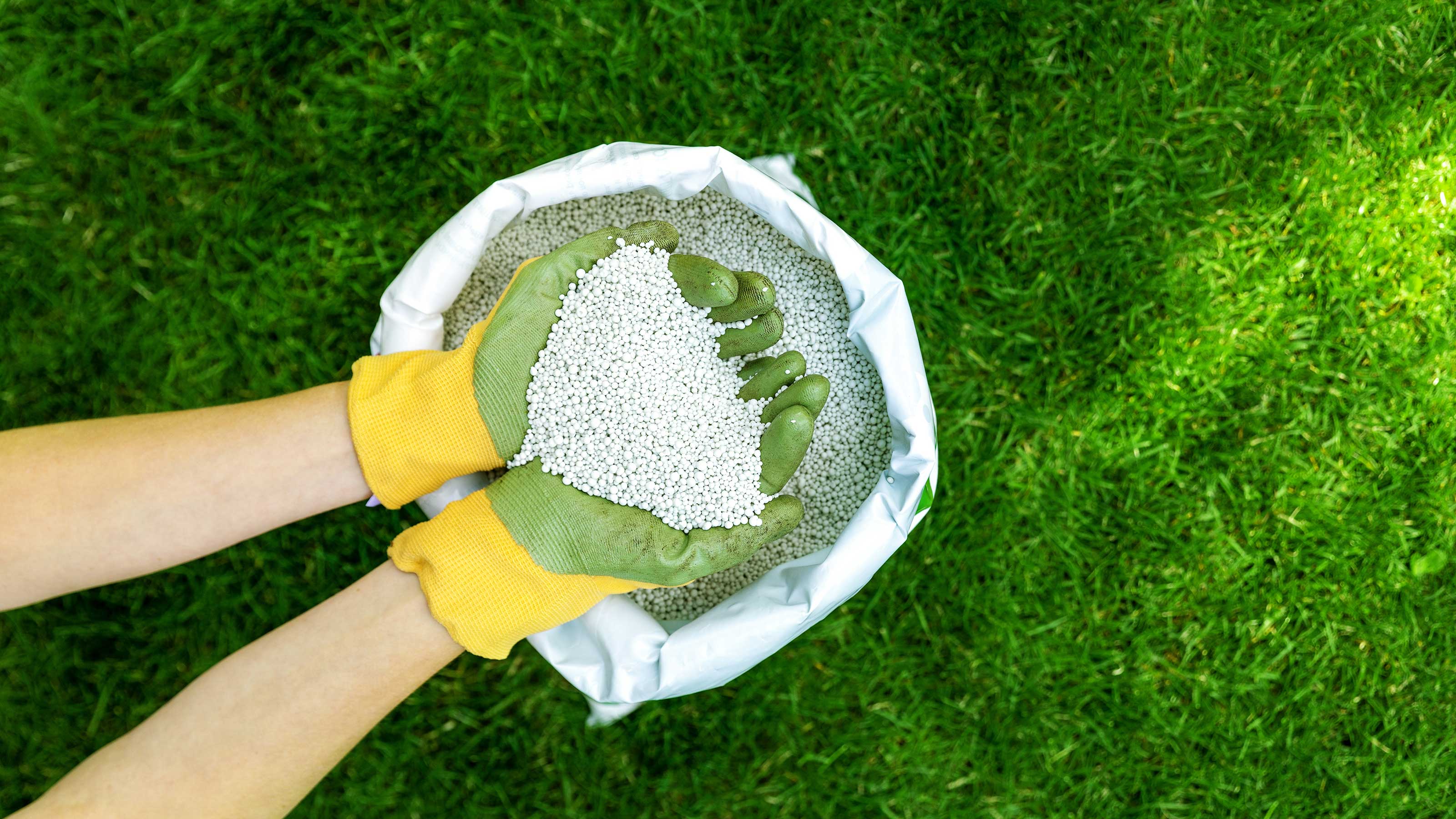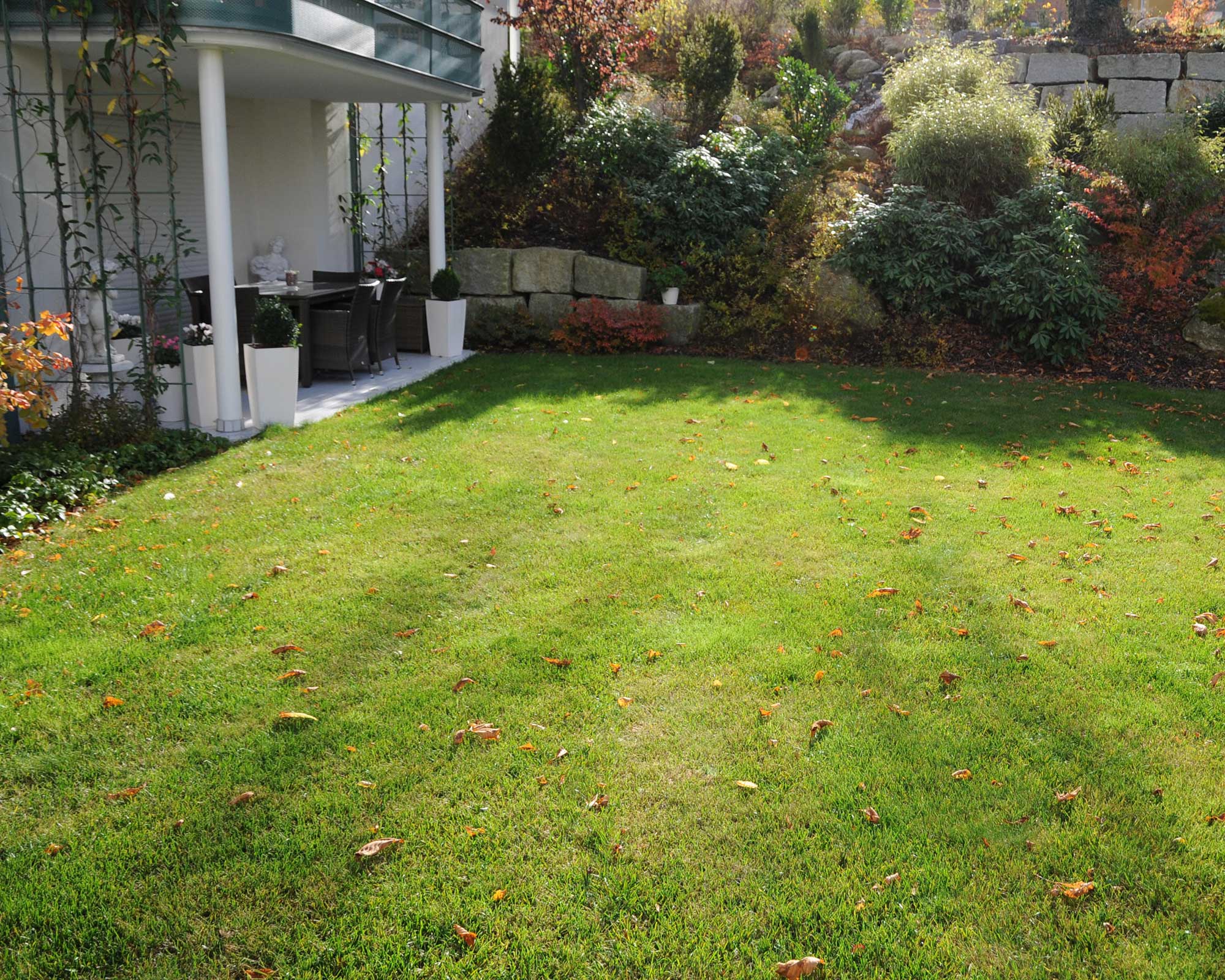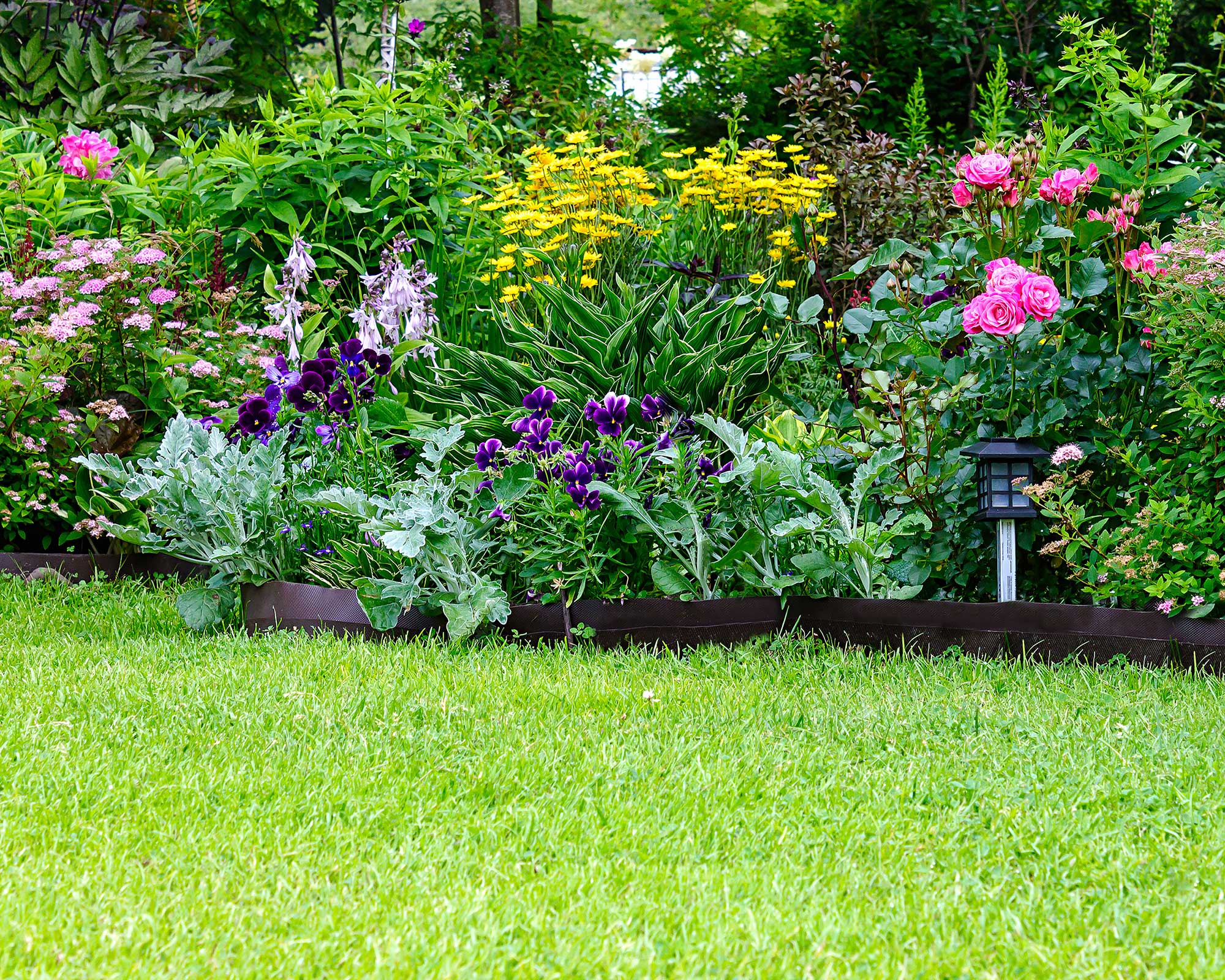How often to fertilize a lawn: a simple guide on when to feed garden grass
Wondering how often to fertilize a lawn? With help from the experts, we explain when to do this essential outdoor task


If you're wondering how often to fertilize a lawn, we're here to help.
Feeding is an essential part of lawn care – giving it a boost of nutrients and keeping it looking lush and growing strongly. And don't we all want a pristine patch of green at the front or back of our plots?
But it's important to apply fertilizer at the right time, otherwise, it can do more harm than good – we explain when to do it.
How often to fertilize a lawn, according to the experts
According to The Grass People, lawns need feeding at least twice annually, as part of your spring lawn care and autumn lawn care routines. They add that you can also fertilize your lawn in mid-summer to give it a boost through the hottest months, but this is optional.
Wait until the grass has started growing before you apply the springtime feed, they advise. The RHS adds that this should be a proprietary spring or summer lawn fertilizer (check Amazon), applied at the manufacturer's recommended rates. These are high in nitrogen so will help the grass grow strongly and suppress weeds and moss. Remember that lawn fertilizer usually needs to be applied to damp grass, or at least when rain is expected.

Feeding a lawn twice a year will help keep it in top condition
Around midsummer, a quick-release fertilizer will give your lawn a boost for a good few weeks, The Grass People add, and can help it maintain a verdant hue. Use one that is specifically designed to be used in spring or summer.
Alternatively, you can mix sulfate of ammonia ( ½oz per sq. yd/15g per sq m) with four times its weight of dry soil, says the RHS. Apply it to your lawn when conditions are cool and moist, and water it in.
These sorts of fertilizers should not be applied once summer is over. As the RHS explains, they will encourage leafy growth which may then become damaged by winter weather. Instead, look for an autumn-specific lawn feed (available on Amazon) that will keep it strong and healthy throughout the colder seasons.
There is no need to feed your lawn during winter as the grass will be dormant.

There are different types of lawn fertilizers for different seasons
Fertilizing damaged lawns to restore them
If you're trying to repair a damaged lawn, you can apply fertilizer more frequently.
Perhaps it's early summer and you've noticed a compacted area where the grass is patchy and yellow, for instance. In this case, John Negus, a gardening expert from Amateur Gardening, suggests scarifying it before feeding with a high-nitrogen lawn fertilizer. Repeat this monthly until autumn, he advises, before switching to a high-potash lawn feed 'to keep the grass healthy in winter.' Remember to follow application instructions.
If you're repairing lawn patches with seed, there is also a product which can be applied to the soil beforehand to give it all the vital nutrients needed to support seedlings – called TotalLawn Pre-Seed Formula (available on Amazon). 'It’s fantastic stuff; it’s fast and slow release so it lasts up to 90 days, which is going to give us an initial boost to get the lawn going,' says garden expert Sam at JayRock Lawncare and Gardening.

Frequent feeding can help to restore a damaged lawn
Should you feed a lawn after a heatwave?
Growing grass in hot, dry weather can be tough, and it may be tempting to give it an extra dose of fertilizer to help it bounce back to its former glory. However, this isn't advised.
'After a heatwave, you should avoid putting any kind of fertilizer on your lawn as this will stress it out even more,' says Carlos Real, Lawn Care Expert and Managing Director of TotalLawn. 'There are a few things you can apply instead to bring it back to its luscious green glory.' One of these is a wetting agent.
'If you’re not familiar with wetting agents, they assist with the breakdown of hydrophobic areas on the surface of the soil, to promote a deeper water penetration in the soil. In other words, they help the soil retain water for longer periods of time,' he explains. 'There are many brands to choose from, the truth is they will all do a similar job so buy from whoever or wherever is convenient for you.'
You can also apply liquid seaweed (available on Amazon). 'This is a great product that you can apply at the same time as watering your lawn,' Carlos says. 'It will increase the biodiversity in your soil, reduce stress in the lawn, further improve water retention, and give the plant some of the nutrients it needs.'
He recommends applying this natural product every four to six weeks, adding that it can be used alongside any other feed or lawn care routine you have. And check the seaweed content before you buy, as a low content will have little effect. 'The higher the percentage, the better,' he says.

The garden was always a big part of Holly's life growing up, as was the surrounding New Forest where she lived. Her appreciation for the great outdoors has only grown since then. She's been an allotment keeper, a professional gardener, and a botanical illustrator – plants are her passion.
